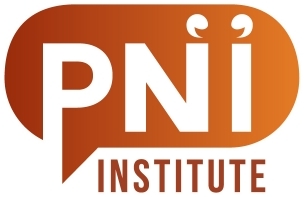On our next PNI Institute call we will discuss continuous PNI, or PNI that depends on the ongoing daily collection of stories (usually with periodic catalysis and sensemaking). February’s call will be about what PNI can learn from performance storytelling. March’s call will be about diversity in PNI projects (scales, goals, topics, participants, etc).
Here are some quick notes on themes that resulted from December’s call on PNI and participatory theatre.
- Date Friday January 13 (it’s always the second Friday of the month)
- Topic Continuous PNI
- Time California 7 00 New York 10 00 London 15 00 Amsterdam 16 00 South Africa 17 00 Melbourne 02 00 (Saturday)
- Place Please follow this link to join the Zoom meeting.
To start the call, Stephen Sillett of Aiding Dramatic Change in Development explained some things about participatory theatre and his work related to it. First he explained the differences between participatory theatre, interactive theatre, and immersive theatre.
- In participatory theatre, audience members interact with the story being told, changing it to express their views and ideas.
- In interactive theatre, audience members interact with the actors on the stage but not with the story.
- In immersive theatre, audience members enter into the world of the story, but they don’t change the arc of the story or what the actors do.
Stephen then explained how a 3-day workshop before a forum (participatory) theater event with youth evolved into the approach he now calls Socio-Drama Topography (SDT). A very quick (too quick) summary of SDT is that on Day 1 people share stories. On Day 2 they use their stories to map themes. On Day 3 they build a large conceptual map and use it to share more stories. It is a 3-day large group journey around themes. Sometimes, on a 4th day (sometimes a week later), SDT participants interact in a forum theatre play based on the themes and map they created. Above all, SDT is about challenging a model of the world. The rule of the game is that you can open up the model of the world being presented. Stephen originally built a recording framework into this (to record stories for later use). He didn’t know about PNI then. Now he is exploring ways to integrate PNI with SDT.
SDT has been adapted to adult contexts such as water issues. In those cases they often don’t use a forum theatre play; they do more community-based research as a fourth stage. Each SDT project has a different generative container that sets the context and gives people something to push against. The work with adults is more future searching. The work with youth is more about how things are now; it’s more reflective.
Next Stephen talked about some of the limitations of participatory theatre, as he sees it. He said that in forum theatre it normally takes 2-4 weeks to construct the play, which is typically done by a professional playwright. He said that participatory theatre has the potential for system change, but it takes 2-5 years to mobilize capacity because people have to get into it. At its best it allows different viewpoints to emerge. The danger, as Stephen sees it, is that people often come into forum theatre with a series of messages they want to disseminate. Even in legislative theatre it can become didactic, and that makes for bad theatre. It can be hard to let things surface, to let multiple viewpoints emerge. Good theatre is about paradox, not clean cut solutions. In improvisational theatre, the rule is that whatever happens is good. But participatory theatre is about working through things that might not be good – that might not resolve easily or well. It’s about wicked problems, where whatever you do there’s some consequence. It’s about the complexity of people’s lived experiences and how to live with these challenges. Whichever way you go there’s a win and a loss, and that becomes rich – in Stephen’s view, this is a good place for theatre.
We talked about how SDT and PNI have a lot of parallels, mostly in the stages of PNI before intervention. The (optional) forum theatre phase of SDT connects to the optional intervention phase in PNI. In essence, PNI and SDT are both about surprising oneself. Also, most of the important things in forum theatre, like in PNI, are social. Neither approach is appropriate for facts alone.
Someone asked: How do you end a SDT project? How do you know when it’s complete? Stephen replied that he tends not to worry about that. In his work with SDT he feels like you never end a project. It should keep going. He asked: If you build a hospital, when does it end? When do you not need a hospital anymore? It doesn’t end. However, with forum theatre (as opposed to SDT) it’s more of a discrete event. If you try and involve forum theatre in a multi-year program you need to have a different scope.
We talked about how it would be helpful to create a diagram where each phase of PNI is discussed in relation to each phase of SDT. (We didn’t actually do that; we just said it would be helpful.)
We talked about how in PNI the stories are the central focus. In most PNI projects people are interested in “getting the stories” first and foremost, usually because they’ve never seen a story collection before. Once they have a story collection, they get new ideas about what they can do with the stories. However, in SDT it’s about getting people to work with the stories right away. There is not so much emphasis on collecting the stories and then seeing what can be done with them. In PNI the stories come first. That’s a difference.
We talked about how you might be able to use PNI to create forum theatre plays. We talked about how you could use PNI to harvest the experiences and learnings that come out of putting on (and participating in) a forum theatre play. We talked about how the profound process that underlies both PNI and SDT is circular, systemic, and ancient. All of these things are about getting new perspectives and renewing your understanding. We talked about how that’s something that is widespread and evident in many processes, from soft systems methodology to systems thinking to … lots of other approaches. We talked about how (Cynthia’s favorite new phrase is that) PNI is about surprising yourself, and so is SDT.
We talked about how SDT may work better than PNI for less educated communities because it has more and stronger facilitation. It is like narrative therapy in that aspect, that it places more of the work onto the facilitator, which is best in contexts where people can’t step up and handle more of the work themselves, as PNI asks them to.


Hi Cynthia,
Thanks for another great write-up. It is great to have these condensed reports on what was discussed and said.
I noticed a few things I remember differently (or more happened that is not written here, which is logical) that I think are worth adding. It could be my memory fails me here. It is after all a long time ago since the talk.
My first remark revolves around this sentence: We talked about how in PNI the stories are the central focus. In most PNI projects people are interested in “getting the stories” first and foremost, usually because they’ve never seen a story collection before.
When I remember well, we indeed said that many projects starts that way because of that interes. I think we said that a better way would be to work with the stories from the start and grow the PNI project from there until there is enough material to to a catalysis. And I think we also said that in StoryWorkshops it is possible to share (not so much collect) and work with stories right away.
Next (at least that is what I remember) we stumbled (and you refer to that too) into the discussion you describe as: it would be helpful to create a diagram where each phase of PNI is discussed in relation to each phase of SDT. I think the idea was to try make either meta-model or to find more overlaps between “softer” methods. I seem to remember that the remarks on other methods such as SSM also included the idea that many methods contain forms of divergence (explore [in many directions and dimensions]) and converge (let novel combination emerge).
Thanks once more for your efforts and looking forward to tomorrows call.